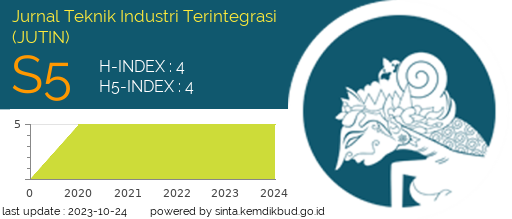Analisis Beban Kerja dengan Metode SWAT Studi Kasus Di PT Dipayana Okta Abadi
DOI:
https://doi.org/10.31004/jutin.v5i2.9279Abstract
Measurement of workload is one of the factors needed by the company. Because by measuring the workload, the company can find out the allowable workload so that it can facilitate the effectiveness of workers and companies. One of the methods used to determine workload is by conducting a SWAT analysis. This analysis was carried out at PT Dipayana Okta Abadi which is an industry engaged in mining or quarrying C. This analysis was carried out by taking questionnaire data, and measuring by collecting data from SWAT card sequences on fifteen production workers, data analysis by processing the SWAT card sequencing results into the DOSBox program and then converting the computer results to the work performed, and drawing conclusions by converting the SWAT Rescaled values ??to the work. The final result of this analysis provides an overview of the workload felt by production workers. The results of the SWAT method show that the Time dimension is 60.86%, while the Effort load is 28.14% and the Stress load is 10.99%. It can be concluded that the time factor is very influential on the state of mental workload, it can be seen from the results of data processing that it is found that the time factor has the highest percentage, namely 60.86%.Downloads
Published
2022-12-26
How to Cite
Dharma Sukhrisno, A., Azriadi, E., Fiatno, A., Kumala Sari, R., & Syifa Tanjung, L. (2022). Analisis Beban Kerja dengan Metode SWAT Studi Kasus Di PT Dipayana Okta Abadi. Jurnal Teknik Industri Terintegrasi (JUTIN), 5(2), 120–135. https://doi.org/10.31004/jutin.v5i2.9279
Issue
Section
Articles of Research
License
Copyright (c) 2022 Arya Dharma Sukhrisno, Emon Azriadi, Aris Fiatno, Resy Kumala Sari, Lailatul Syifa Tanjung

This work is licensed under a Creative Commons Attribution-ShareAlike 4.0 International License.



